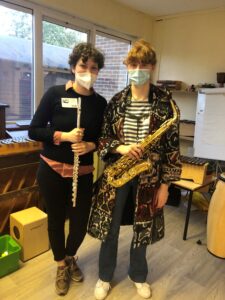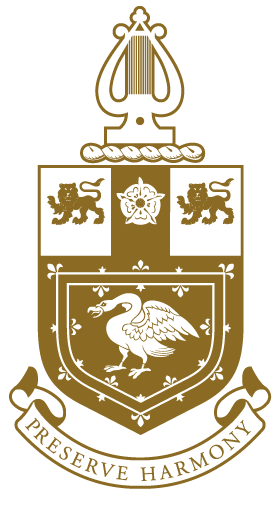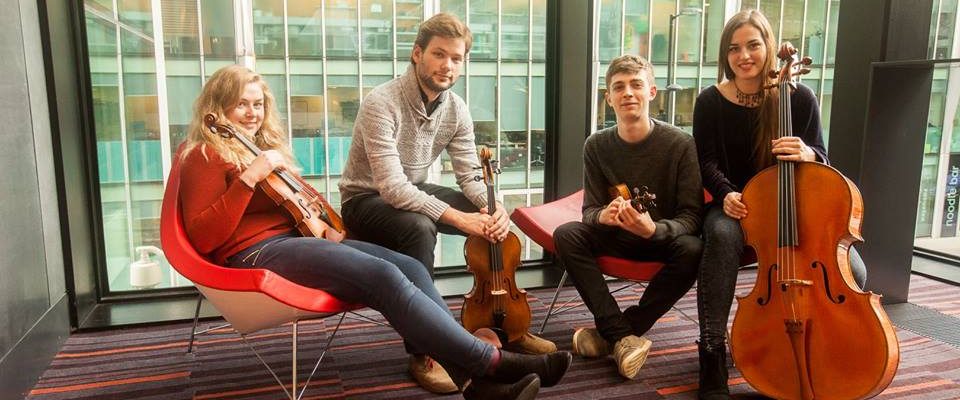Music as Therapy: Linden Lodge Special Educational Needs and Disabilities School (Wandsworth 2022)
 In 2022, Musicians’ Company Young Artists Anna Kondrashina (flute) and Sophia Elger (sax) embarked on an eight-week music project at Linden Lodge, a specialist day and weekly boarding school in south west London. Organised and funded by the Company, the project formed part of our focus on London music-as-therapy work. Anna shares her experiences of this very special project.
In 2022, Musicians’ Company Young Artists Anna Kondrashina (flute) and Sophia Elger (sax) embarked on an eight-week music project at Linden Lodge, a specialist day and weekly boarding school in south west London. Organised and funded by the Company, the project formed part of our focus on London music-as-therapy work. Anna shares her experiences of this very special project.
“I’d been involved in other Company projects, but this was my first experience working with visually impaired and sensory impaired children. Partnering with saxophonist Sophia Elger and volunteer can Company Liveryman Richard Lea, a wonderful singer, I wasn’t sure how the experience would differ from mainstream music teaching. Vikki, the school’s wonderful music teacher, got fully involved in helping us plan and deliver the sessions.
Vikki had been introducing the students to different music styles, so we decided to build on this with sessions around folk, jazz, classical and rock and pop. With eight sessions to prepare – four for 9-11 year olds studying ‘sounds of intent’, an alternative to the national curriculum, and four for 11-14 year olds studying key stage 2, there was a lot to plan. What I now know is that a well-structured lesson plan is even more important in a SEND (special educational needs and disabilities) environment.
To give shape to each session, Vikki started and ended each lesson playing a ‘hello’ and ‘goodbye’ song familiar to the students. This also served as an ice-breaker, helping to get the children and us in the zone. Both classes had some wonderful characters who would often pipe up with a little solo during the sing-song or do something funny that would send ripples of laughter throughout the room.
 We all know practice makes perfect, but the constant repetition that might bore some children was particularly welcome by this student group. We also had to approach things slowly as reaction times varied, with some students needing more time to process information. This make teaching trickier as you tend to gauge how well something is going through visual cues, eg. smiles, laughing, clapping, or hands in the air in response to something you’ve asked. Sophia and I learnt not to be afraid of blank faces or silence, and to allow lessons to change course in order to meet those different learning rhythms.
We all know practice makes perfect, but the constant repetition that might bore some children was particularly welcome by this student group. We also had to approach things slowly as reaction times varied, with some students needing more time to process information. This make teaching trickier as you tend to gauge how well something is going through visual cues, eg. smiles, laughing, clapping, or hands in the air in response to something you’ve asked. Sophia and I learnt not to be afraid of blank faces or silence, and to allow lessons to change course in order to meet those different learning rhythms.
Group improvisation games and rhythm games also played a big part in each session. The improvisation games were designed to help the children emotionally connect to the instruments through familiar sounds. For example, we asked them use their instruments to create the honking, beeping, babbling sounds of a busy street, the eerie hum of a desert or the whistling sound of a train. This created a lot of excitement within the room.
In the rhythm games – rhythm being a key element in jazz, which Sophia demonstrated on her sax – the students got involved in loud and quiet clapping exercises, or responding in time using their instruments. At the end of each session, we invited the class to join in with dance or with their instruments as we performed a dance-like duet that linked to the session’s folk, jazz, classical or rock and pop theme.
All in all, this was an incredibly fun project that helped the children and young people express their thoughts, feelings and ideas to the group and to the world. Although longer than usual – each session lasting an hour as opposed to the more usual 30-40 minutes for participation projects – this gave us the extra time we needed to make it a really positive learning experience.”
Interview by Suzy Willmott
Suzy is freelance copywriter who works with the Musicians’ Company





